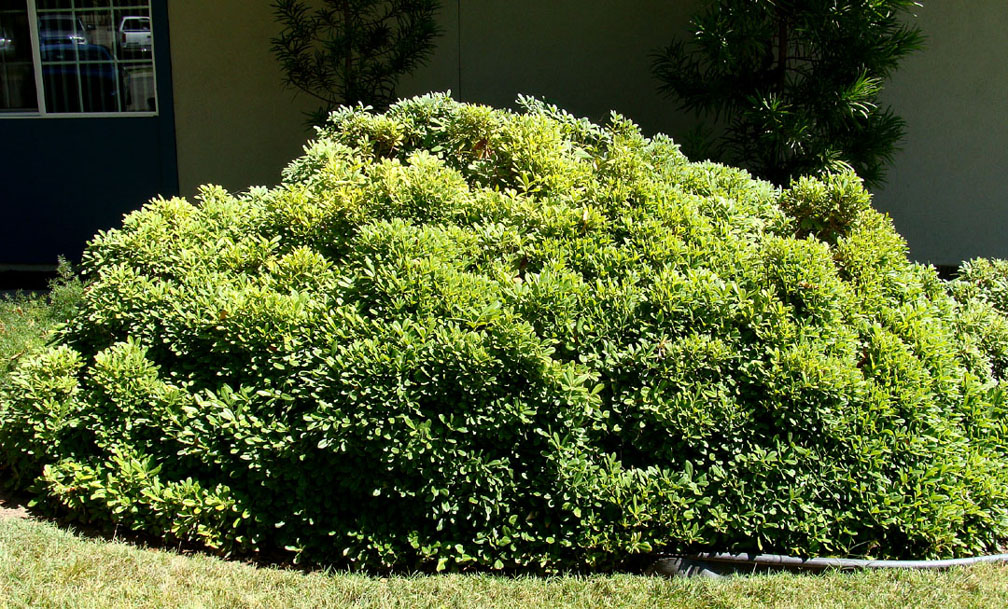| References: Ill-Min C, Su-Hyun S, Eun-Young K, Won-Hwan P, Hyung-In M. Larvicidal effects of the major essential oil of Pittosporum tobira against Aedes aegypti (L.). Journal Of Enzyme Inhibition & Medicinal Chemistry [serial online]. June 2010;25(3):391-393. Available from: Academic Search Premier, Ipswich, MA. Accessed October 24, 2013. Naoshige Akimoto, et al. "5-Hydroxy-Seco-Carotenoids From Pittosporum Tobira." Phytochemistry (Amsterdam) 67.19 (n.d.): 2120-2125. Biological Abstracts 1969 - Present. Web. 24 Oct. 2013. | Dwarf Pittosporum #193: Tree Guide: https://mapsengine.google.com/map/viewer?mid=zFDBt15oTJO4.kQSKLJkNTJMo Scientific Name: Pittosporum tobira Angiosperm or Gymnosperm: Gymnosperm Natural Habitat: North America Leaf Pattern: Simple oval in clusters Germination Process: Fruit ripen late in the summer and open up to reveal an orange seed. Type of Seed: Orange colored fruit Pollination and Spreading: Can reproduce asexually and sexually, attracts pollen-carrying insects with its nectar and sweet smelling flowers. Fellow Animals and Plants in Habitat: Fellow plants to the pittosporum are the boxwood and holly as they are all good options for small shrubs. Animals in it's habitat are squirrels and small birds. Type of Bark: Somewhat soft, green bark Ethnobotony: The dwarf pittosporum is most often used as a hedge due to its density and ability to be manipulated in shape so easily. The Pittosporum has also been studied for its effects of repelling mosquitoes. Current Research: Current research on the tree include a study of the "essential oils" of the bush, and how they could be used in mosquito repellant. Essay: The Dwarf Pittosporum is a dense, usually low growing plant originating from Japan. This species produces a sweet smelling, white flower and orange berries. The density of the plant is ideal for low growing foliage and for hedges. |
0 Comments
|


 RSS Feed
RSS Feed